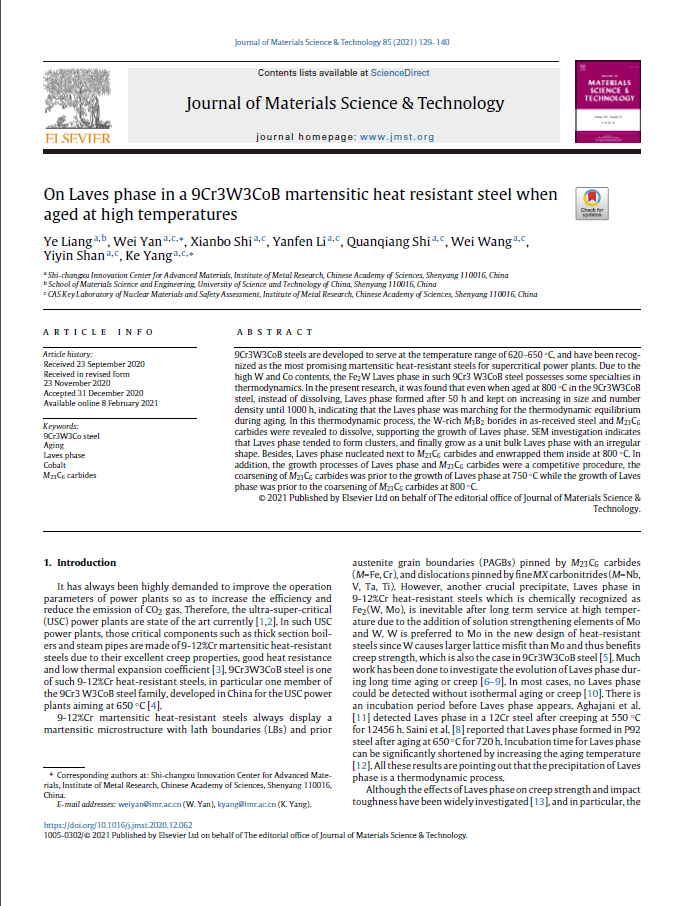9Cr3W3CoB steels are developed to serve at the temperature range of 620-650 ℃, and have become to be recognized as the most promising martensitic heat-resistant steels for supercritical power plants. Due to the high W and Co contents, the Fe2W Laves phase in such 9Cr3W3CoB steel possesses some specialties in thermodynamics. In the present research, it was found that even when aged at 800 ℃ in the 9Cr3W3CoB steel, instead of dissolving, Laves phase formed after 50 h and kept on increasing in size and number density until 1000 h, indicating that the Laves phase was marching for the thermodynamic equilibrium during aging. In this thermodynamic process, the as-received W-rich inclusions and M23C6 carbides were revealed to dissolve, supporting the growth of Laves phase. SEM investigation indicates that Laves phase tended to form clusters, and finally grow as a unit bulk Laves phase with an irregular shape. Besides, Laves phase nucleated next to M23C6 carbides and enwrapped them inside at 800 ℃. In addition, the growth processes of Laves phase and M23C6 carbides were a competitive procedure, the coarsening of M23C6 carbides was prior to the growth of Laves phase at 750 ℃ while the growth of Laves phase was prior to the coarsening of M23C6 carbides at 800 ℃.
